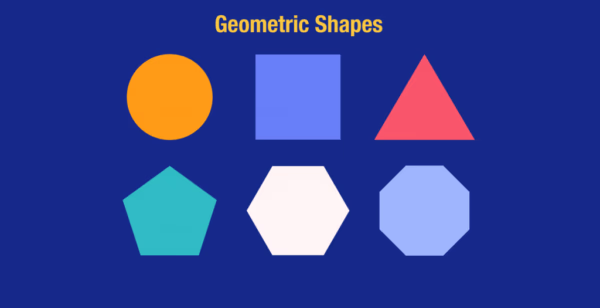Geometrical shapes are all around us. They make up the form and structure of every two-dimensional (2D) and three-dimensional (3D) object.
In mathematics—namely geometry—and in real life, geometric shapes are two or three-dimensional figures that can be recognized and categorized based on a specific outline/boundary and other attributes including curves, lines, and angles. Both types of geometric shapes (2D and 3D) will be covered in this guide, which includes a complete list of all geometric shapes names along with images and a short description and key features of each.
What are Geometric Shapes?
A geometrical shape is a structure that has a definitive shape comprised of curves, lines, and/or points.
You are probably already familiar with many common 2D geometric shapes like circles, ovals, squares, and rectangles, in addition to common 3D geometric shapes such as cubes, spheres, and cylinders.
The main concept behind understanding geometric shapes is that every shape has unique properties and features that distinguish them from other shapes. Each geometric shape has a unique name (ex. rectangle, square, oval, etc) and geometrical shapes can be easily identified by looking at an image and seeing the shape’s characteristics, such as number of sides, angles, curves, or points.
In fact, geometric shapes are all around you all of the time. Figure 01 below shows examples of common 2D geometric shapes and 3D geometric shapes and how they relate to objects in the real world. Later in this guide, we will take a look at geometric shapes art and design examples.
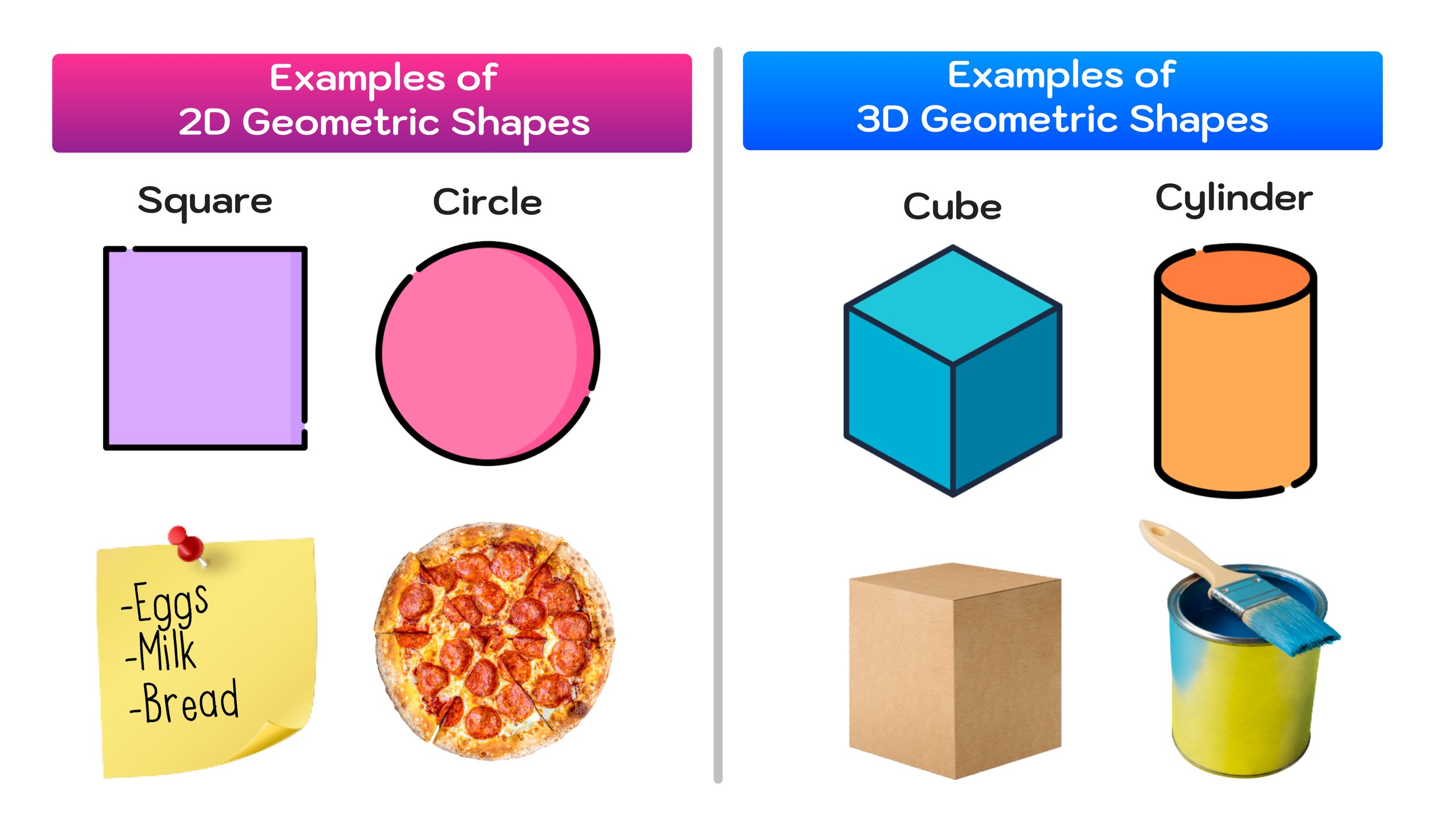
Figure 01: Example of 2D Geometric Shapes and 3D Geometric Shapes and how they relate to items in the real world.
2D Geometric Shapes Complete List
Circle
A circle is a 2D geometric shape consisting of all points that are at an equal distance from a central point called the center. This distance is known as the radius of the circle.
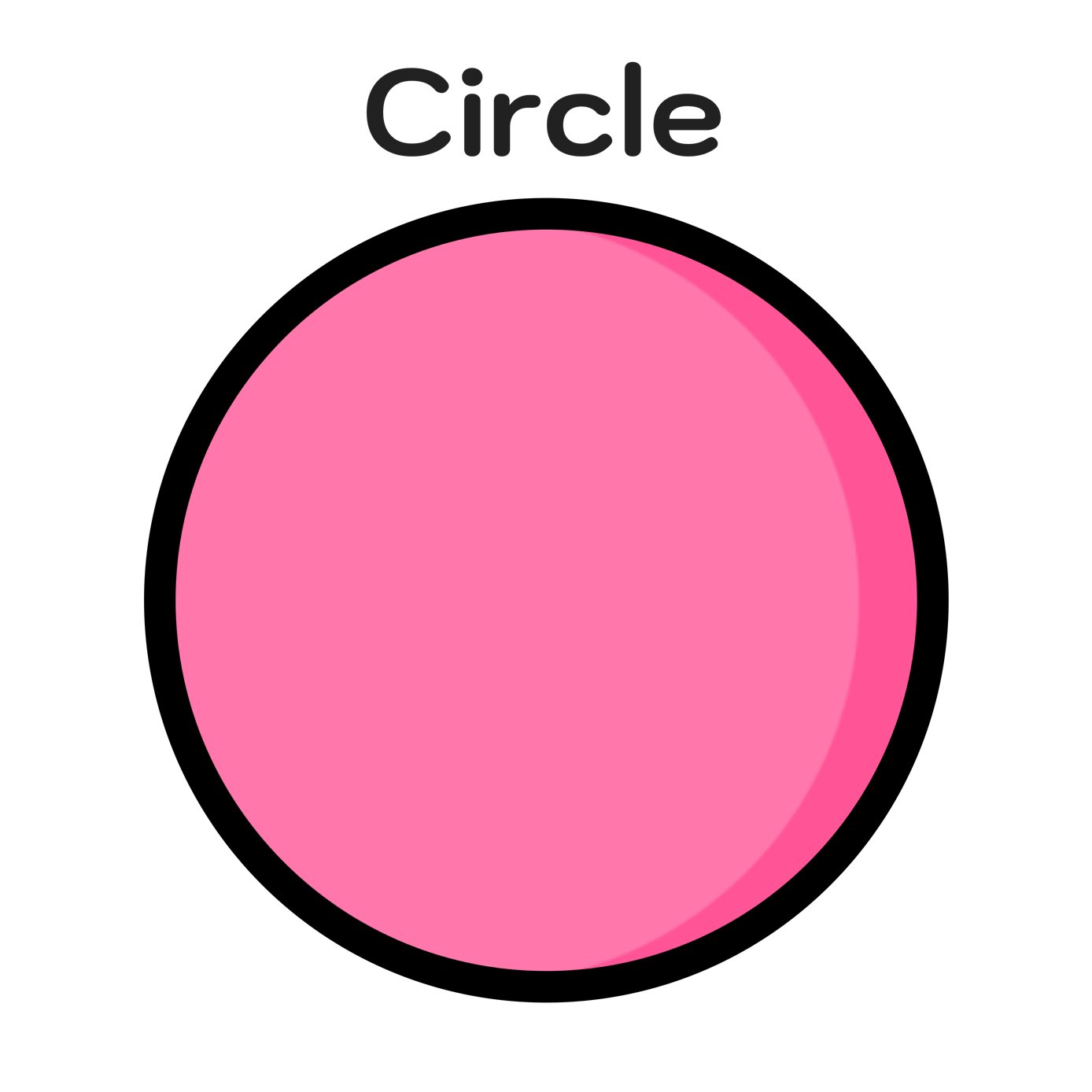
Semicircle
A semicircle is half of a circle, which is formed by cutting a circle along its diameter and removing one of the resulting halves.
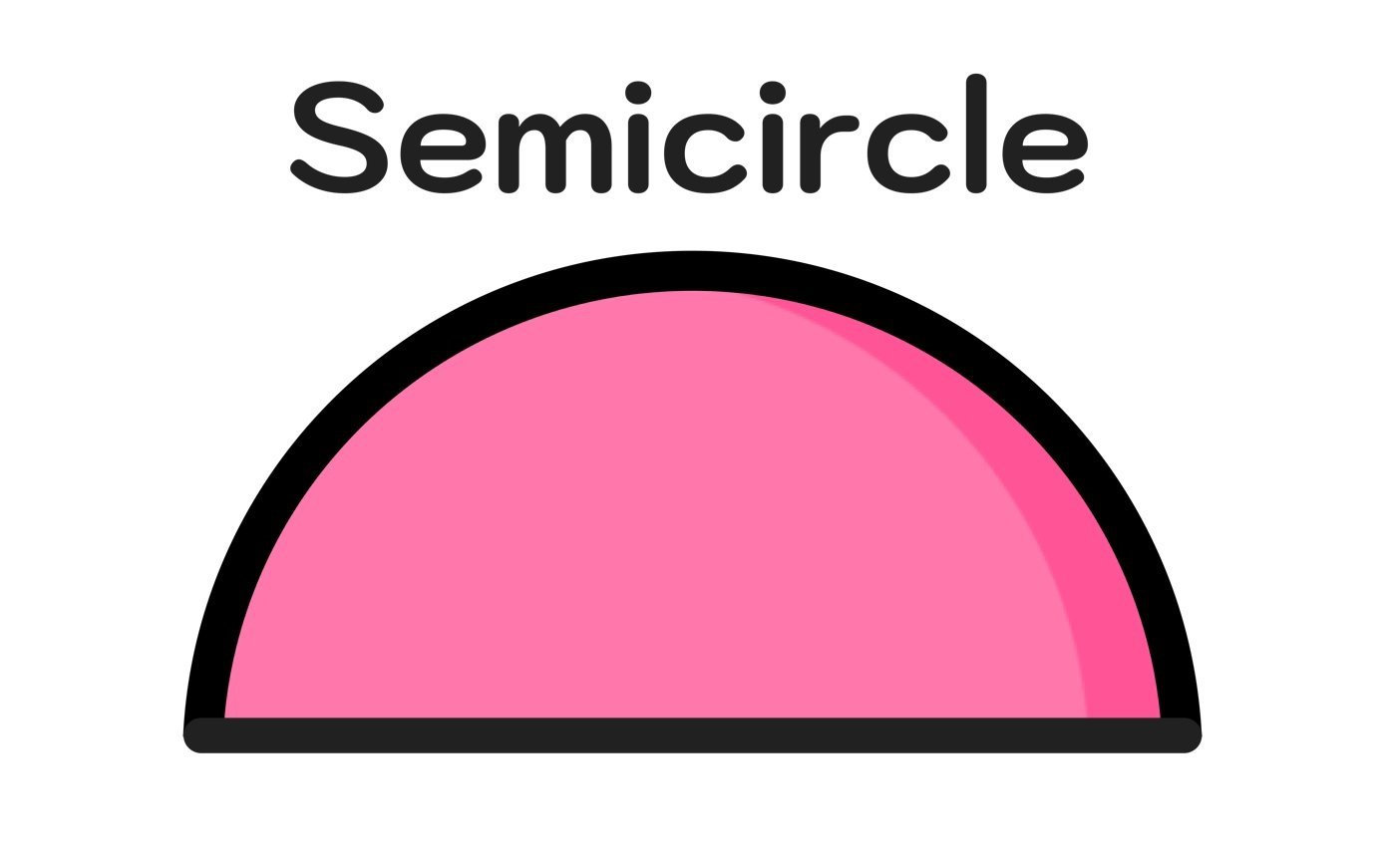
Oval
An oval is a closed, elongated shape with no straight lines, resembling an egg or an ellipse.
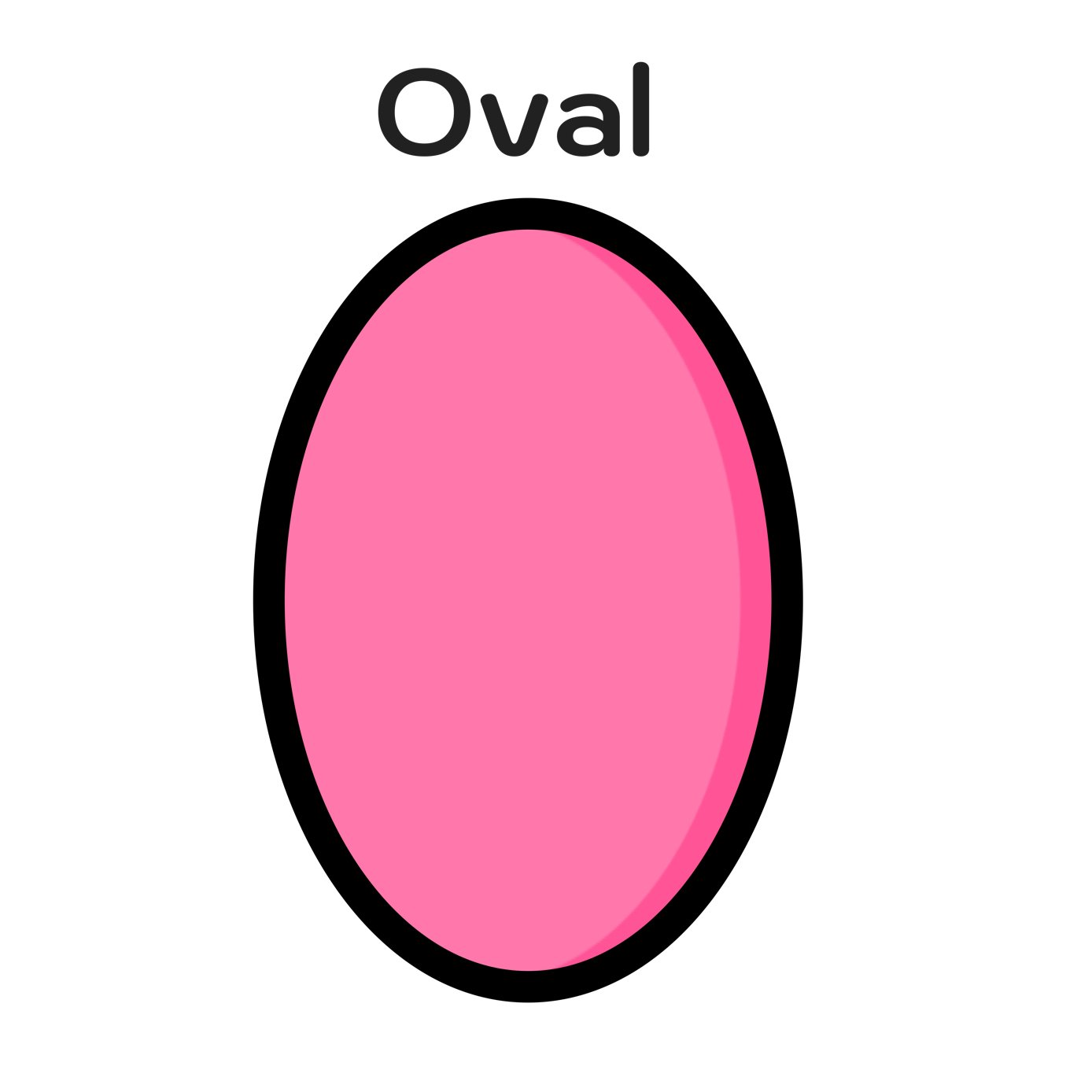
Triangle
A triangle is a 2D geometric shape that is a plane figure with three straight sides and three angles.

Square
A square is a four-sided polygon with all sides equal in length with all four angles being right (i.e. they equal 90 degrees).
Is a square also a rectangle?

Rectangle
A rectangle is a four-sided polygon with opposite sides that are parallel to each other and equal in length. All four interior angles of a rectangle are equal to 90 degrees.
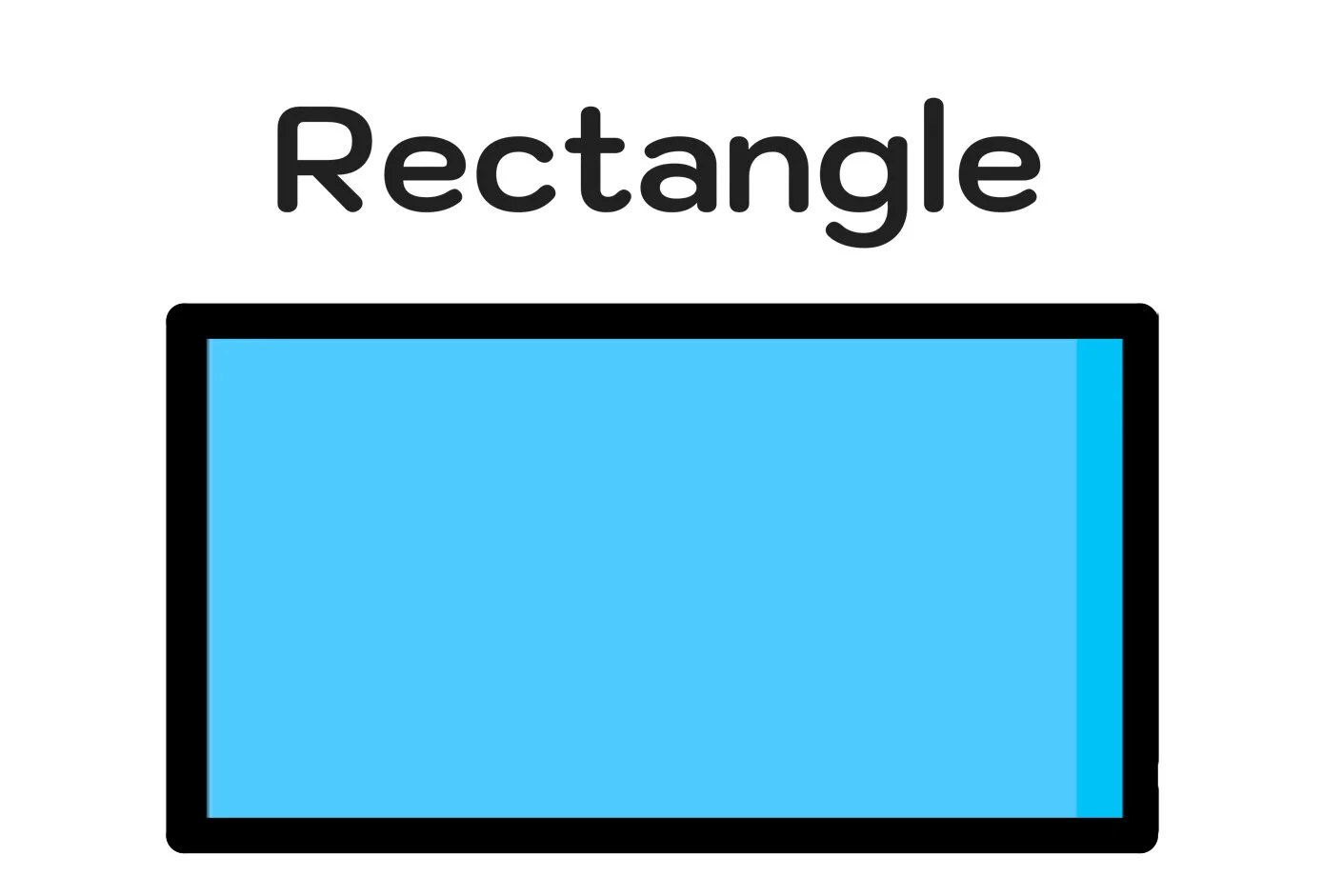
Parallelogram
A parallelogram is a 2D geometric shape that is a four-sided polygon that has parallel opposite sides that are equal in length.
Parallelogram lines of symmetry explained
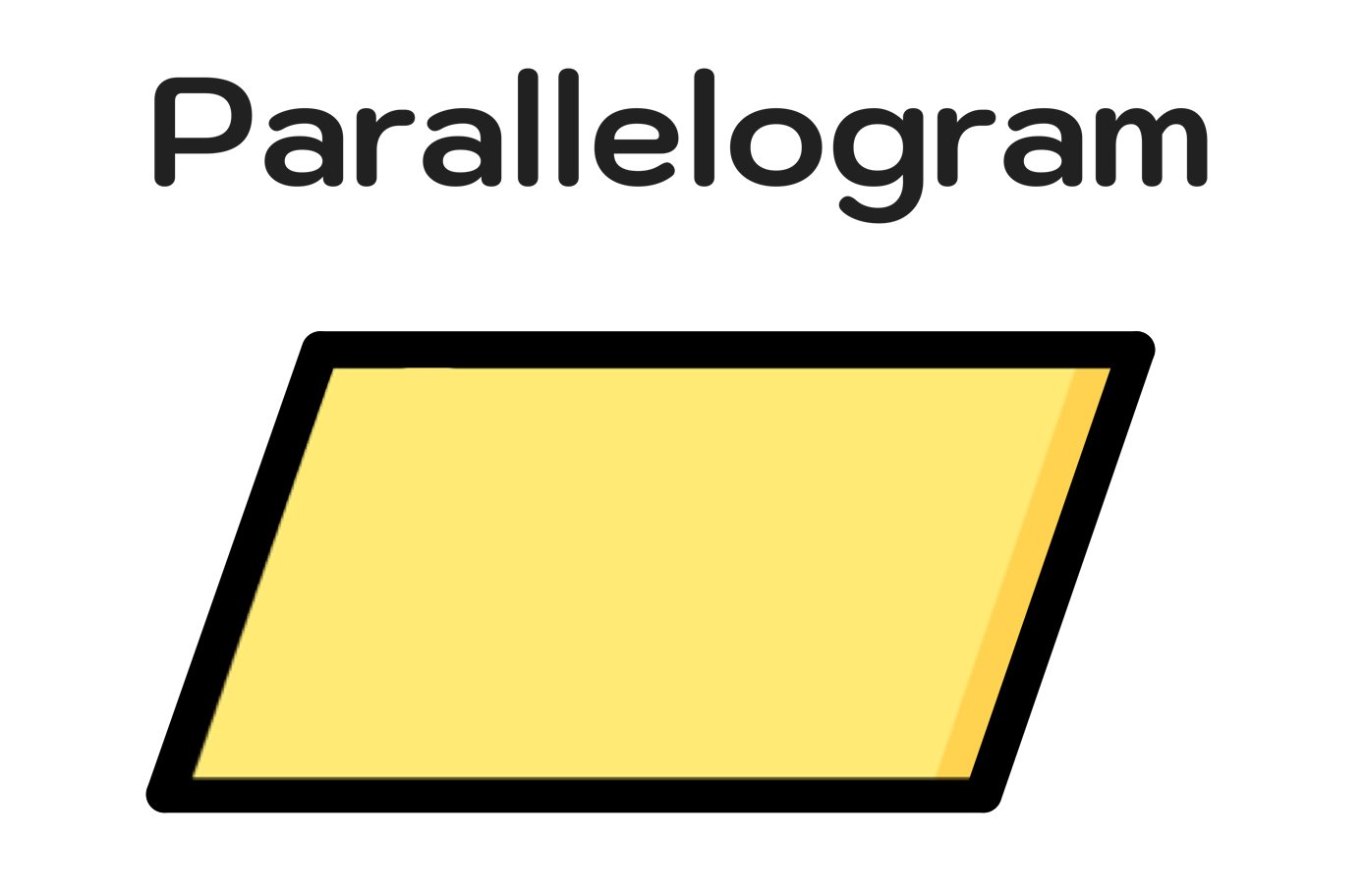
Rhombus
A rhombus is a four-sided polygon where all four sides are equal in length and opposite angles are equal in measure.
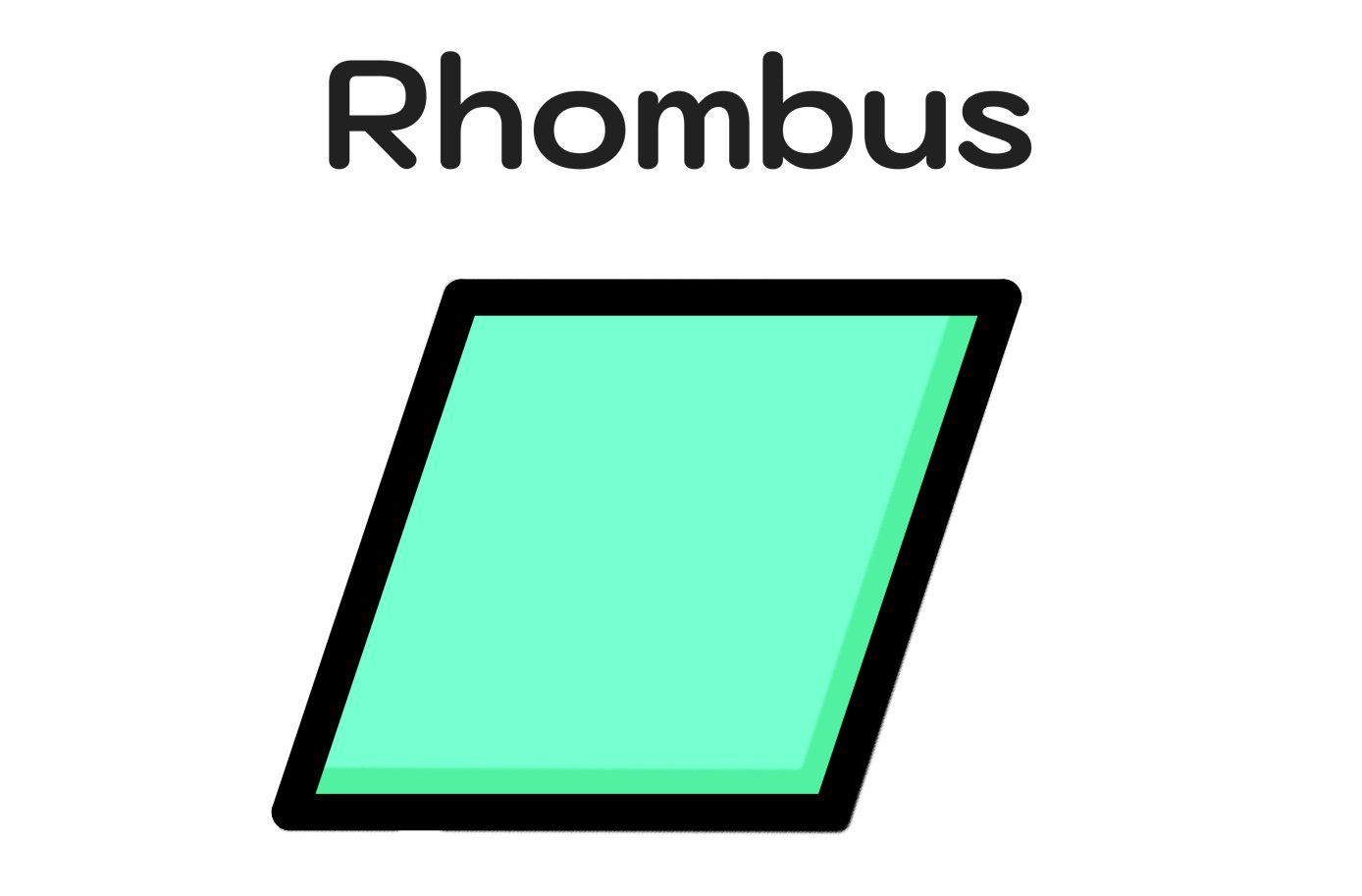
Trapezoid
A trapezoid is a 2D geometric shape that is a quadrilateral with at least one pair of parallel sides
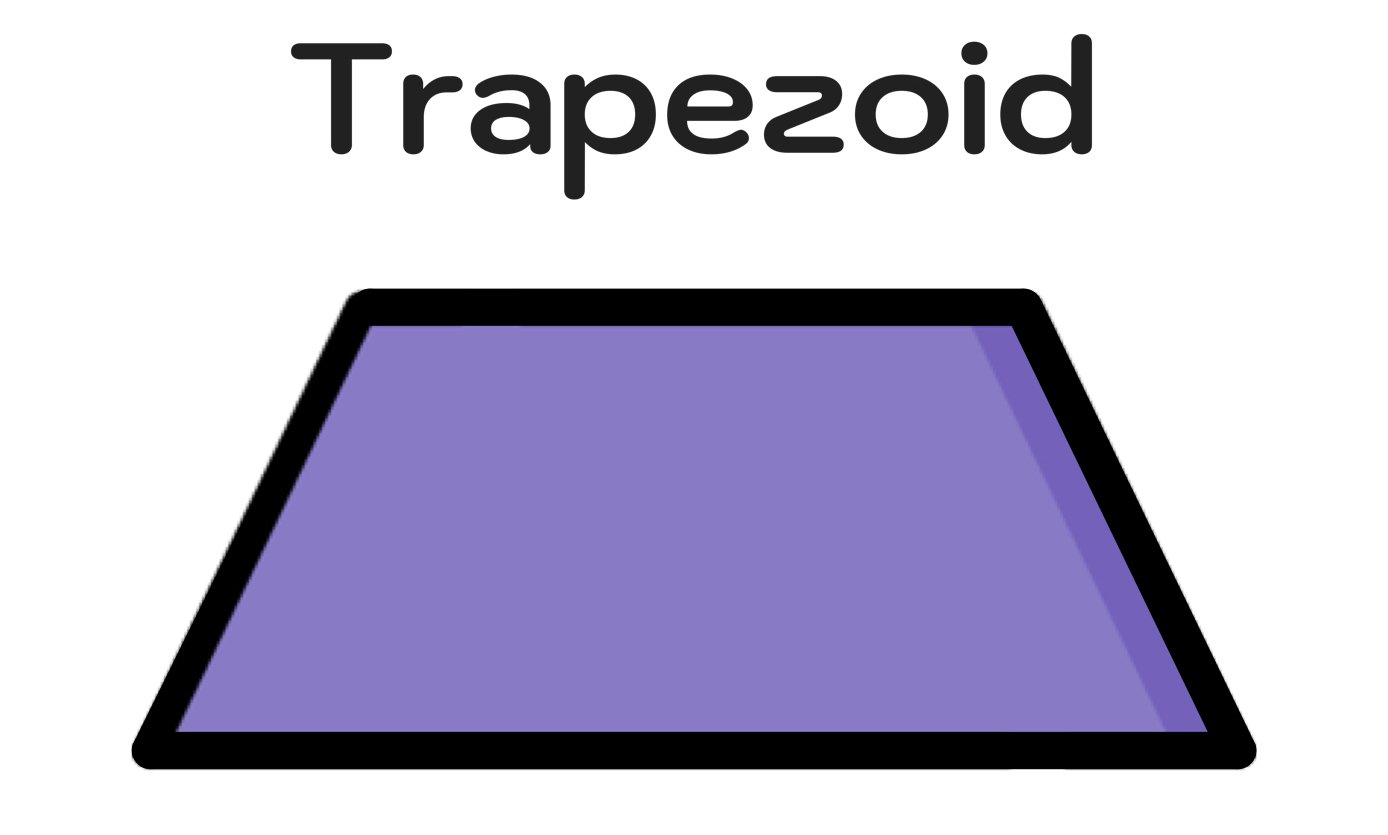
Kite
A kite is a four-sided polygon with two pairs of adjacent sides of equal length.
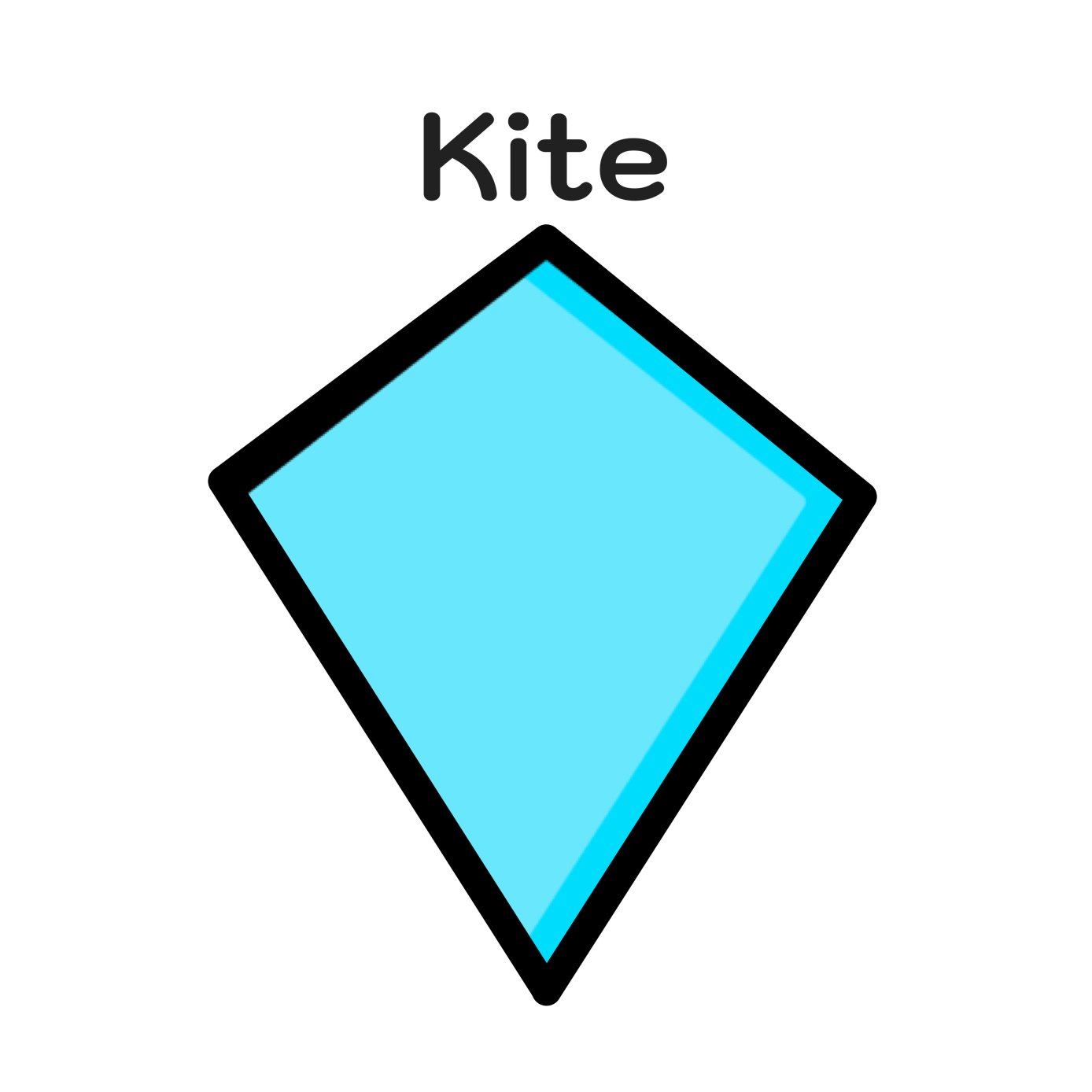
Pentagon
The 2D geometric shape known as a regular pentagon is a five-sided polygon where all of the sides and all of the angles are equal in measure.
Pentagon = 5 Sides

Hexagon
The 2D geometric shape known as a regular hexagon is a six-sided polygon where all of the sides and all of the angles are equal in measure.
Hexagon = 6 Sides
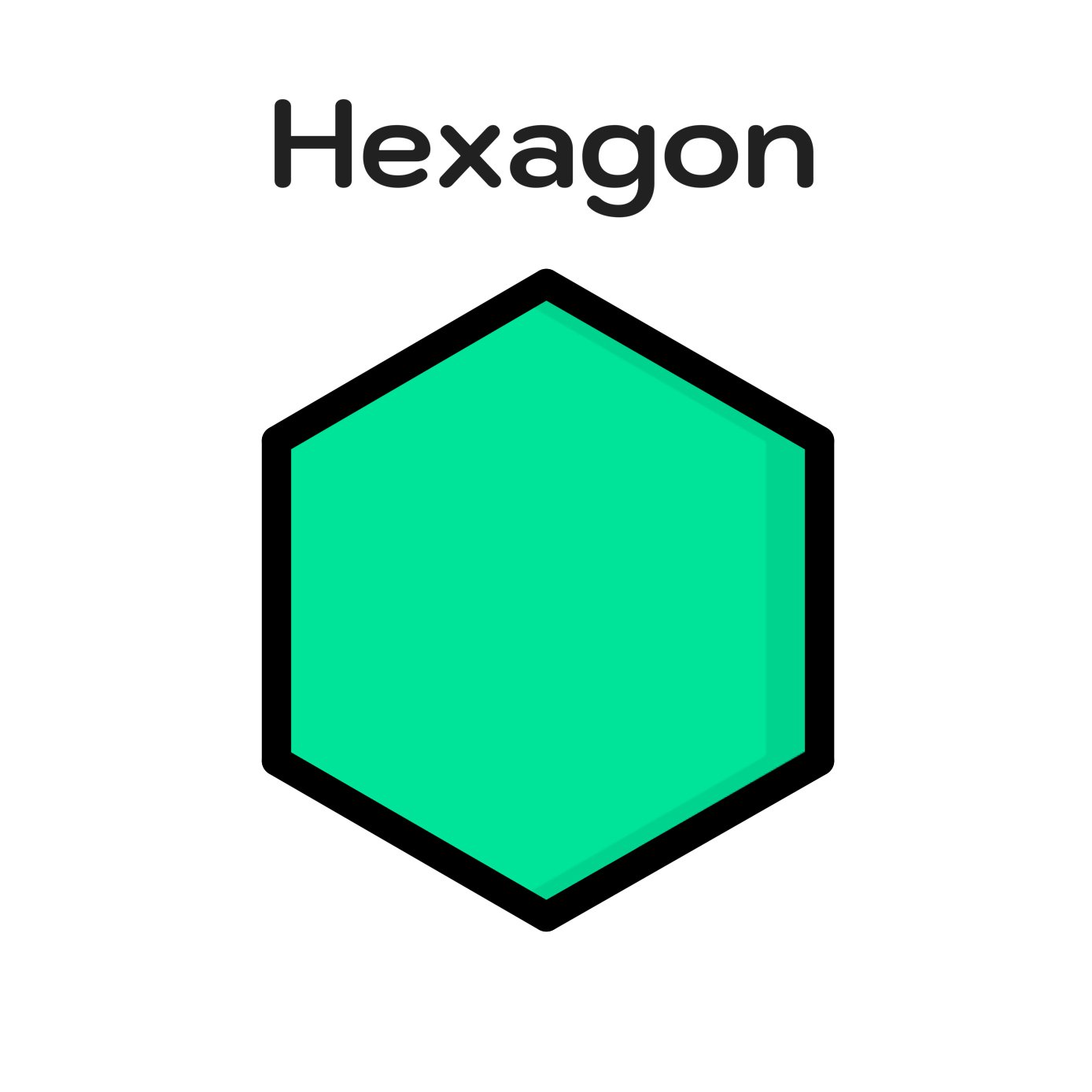
Heptagon
The 2D geometric shape known as a regular heptagon is a seven-sided polygon where all of the sides and all of the angles are equal in measure.
Heptagon = 7 Sides

Octagon
The 2D geometric shape known as a regular octagon is an eight-sided polygon where all of the sides and all of the angles are equal in measure.
Octagon = 8 Sides
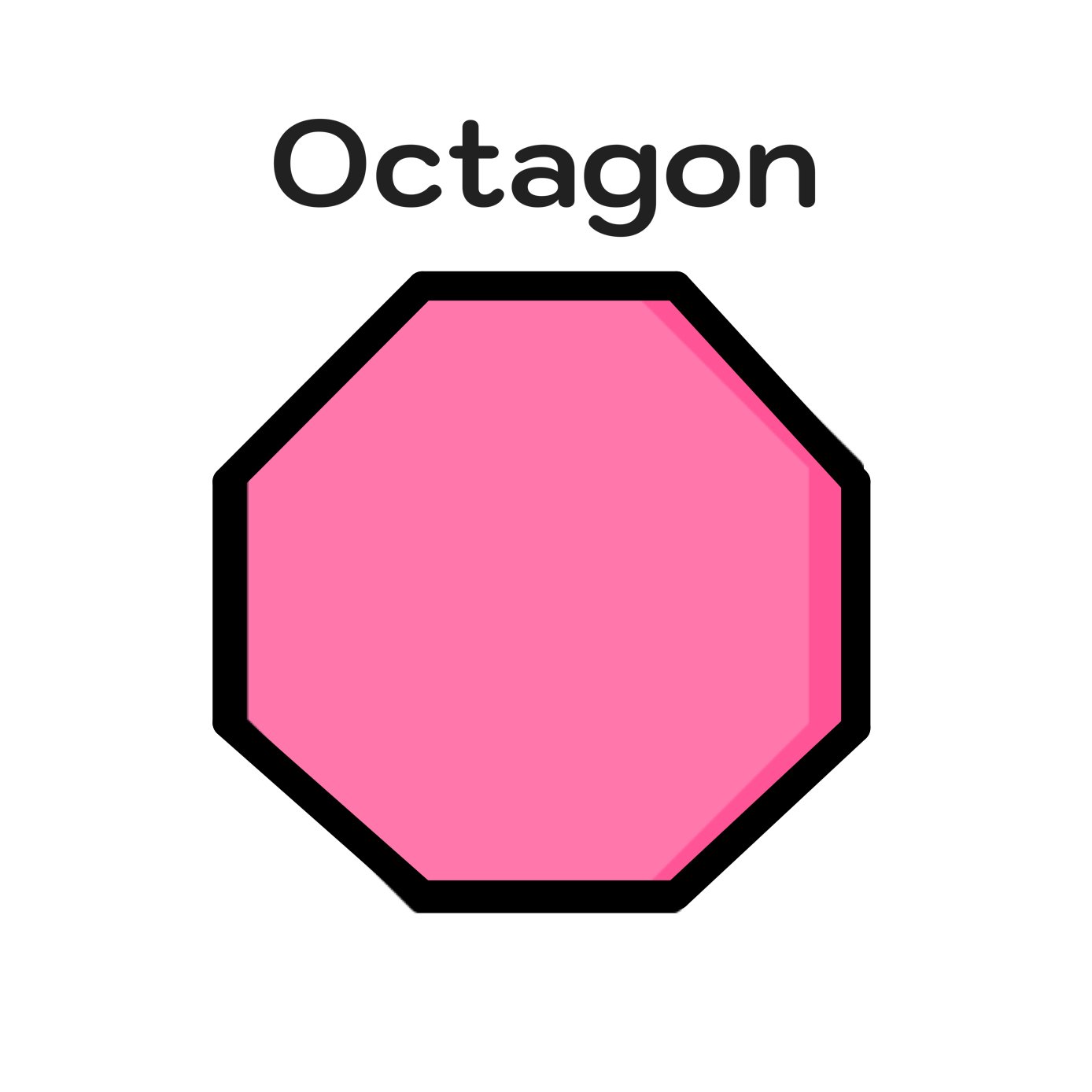
Nonagon
The 2D geometric shape known as a regular nonagon is a nine-sided polygon where all of the sides and all of the angles are equal in measure.
Nonagon = 9 Sides
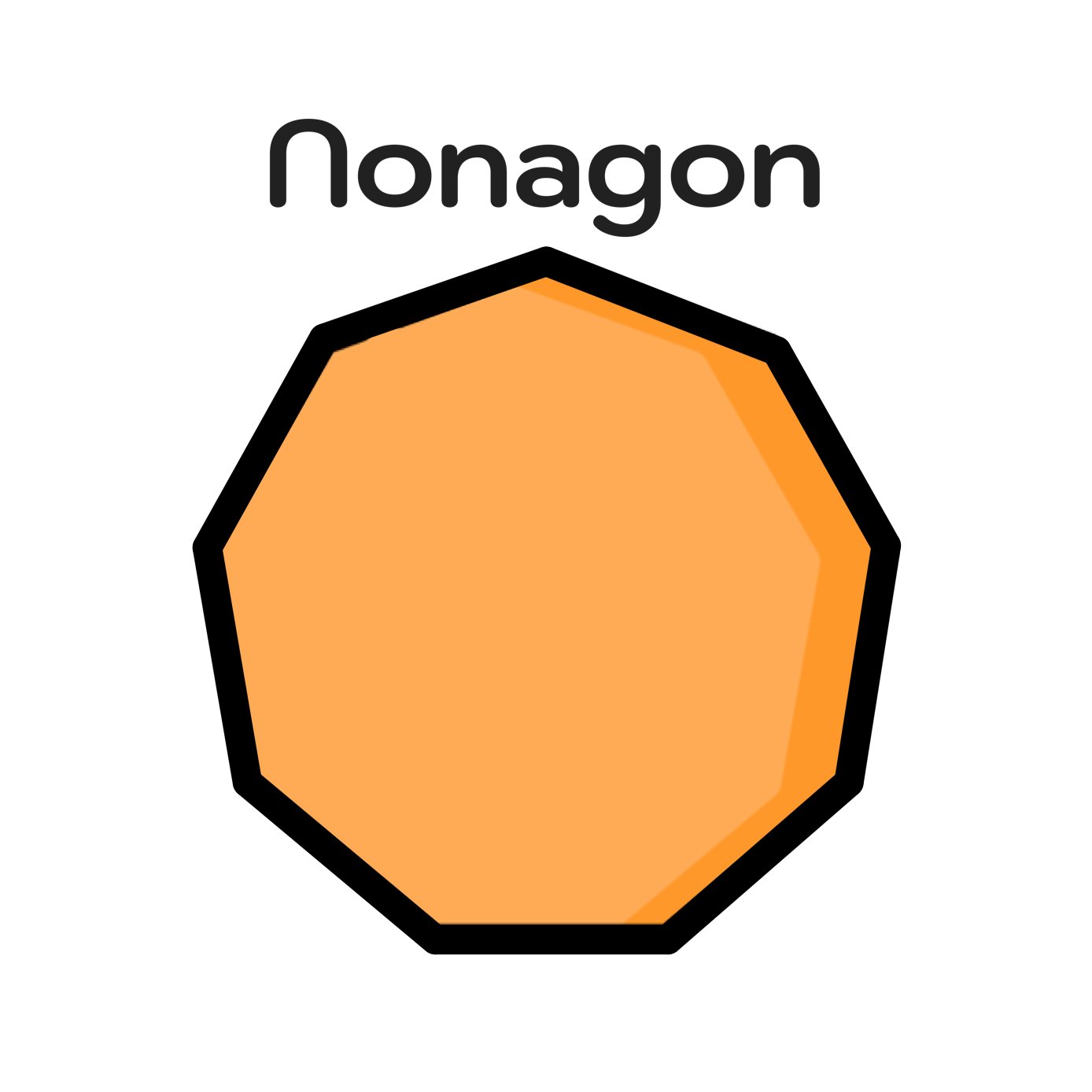
Decagon
The 2D geometric shape known as a regular decagon is a ten-sided polygon where all of the sides and all of the angles are equal in measure.
Decagon = 10 Sides
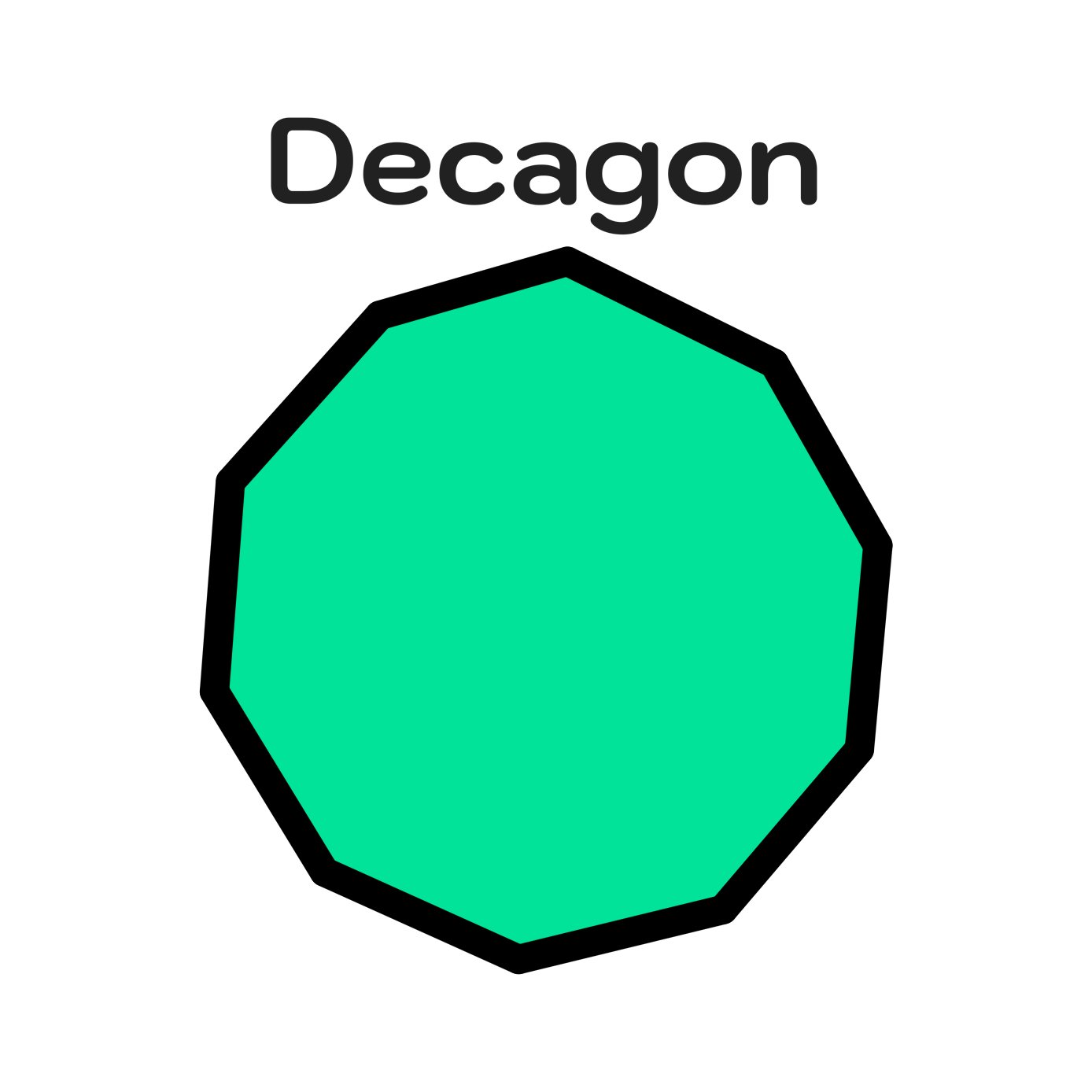
3D Geometric Shapes Complete List
Cube
A cube is a 3D geometrical shape with six square faces that are all equal in size and all interior angles equal 90 degrees.
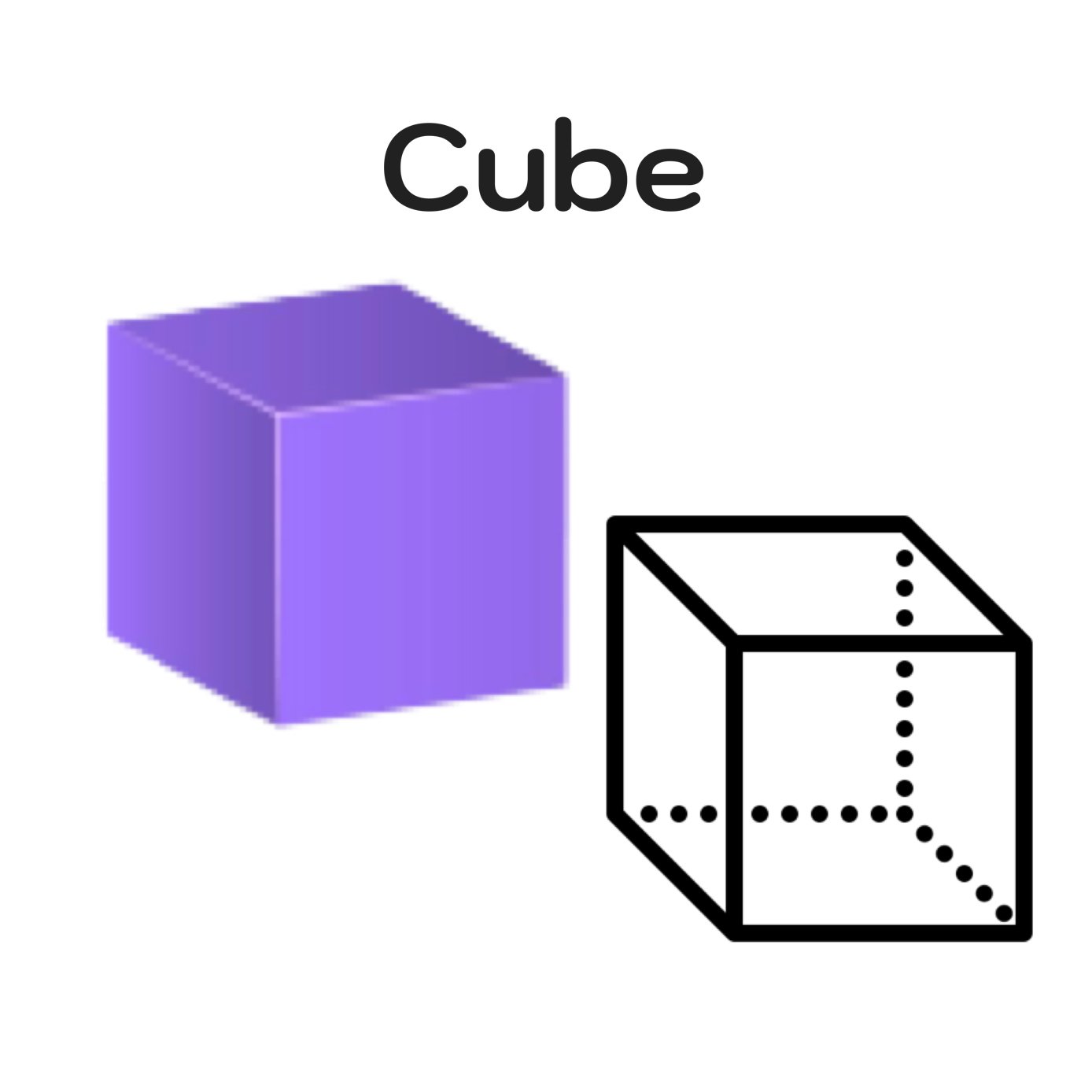
Cuboid
A cuboid, also referred to as a rectangular prism, is a 3D geometrical shape with six square faces where opposite faces are equal in size and all interior angles equal 90 degrees.
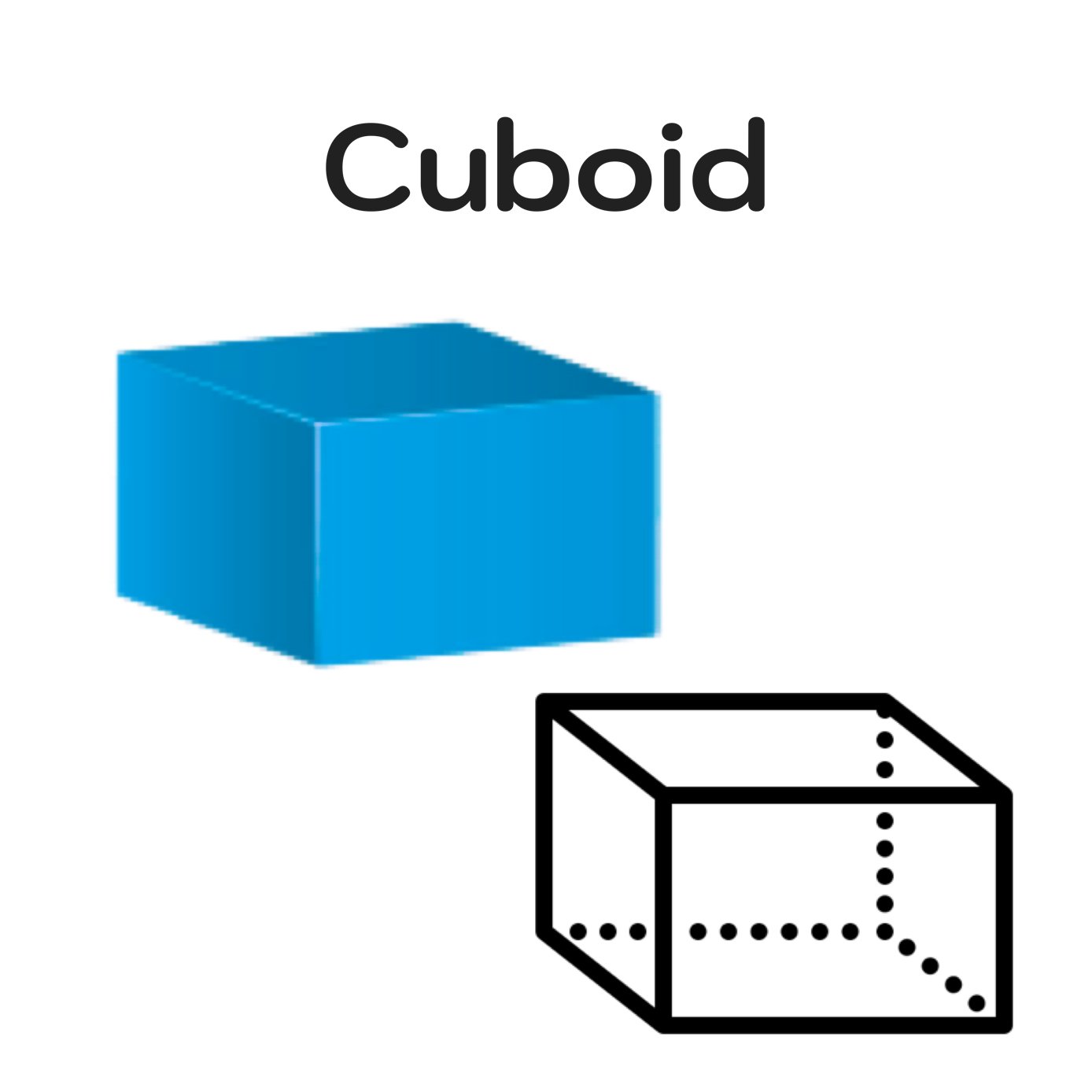
Cone
A cone is a 3D geometric shape with a circular base that slants to a point called an apex.
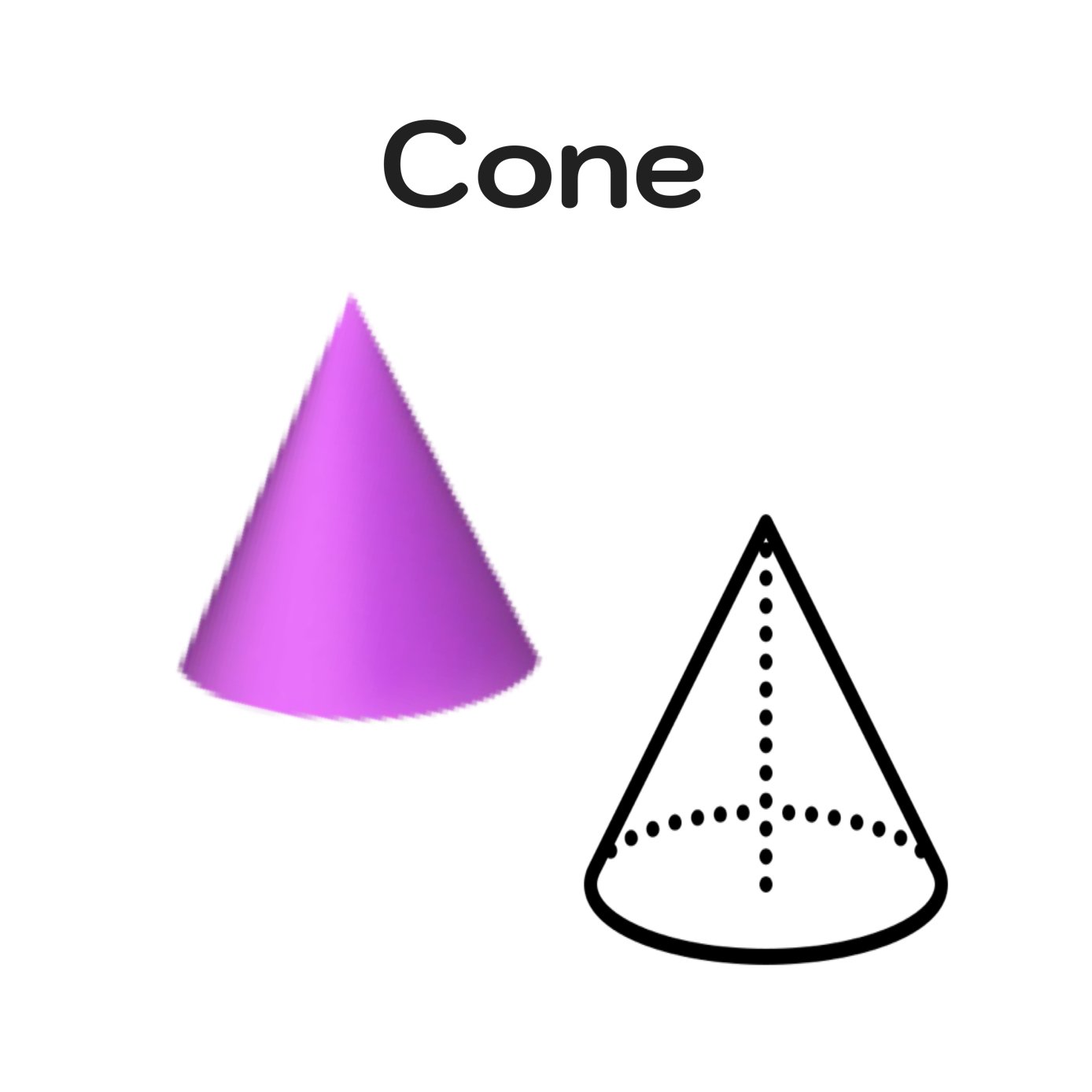
Cylinder
A cylinder is a is a 3D geometric shape made of two parallel and equal circular bases of connected by a curved surface.
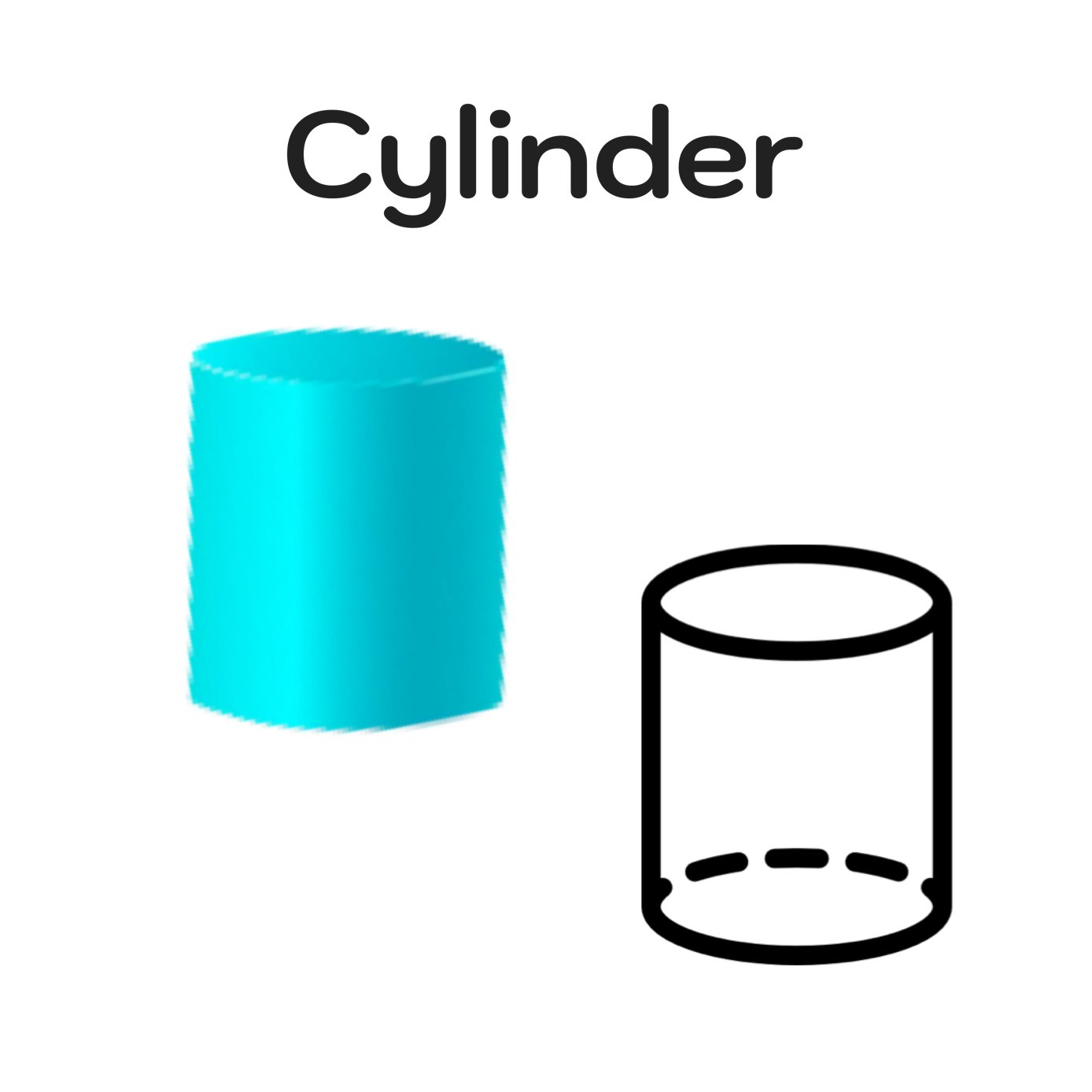
Sphere
A sphere is a 3D geometric shape that resembles a ball and is perfectly round, where all surface points are equidistant from the center point.
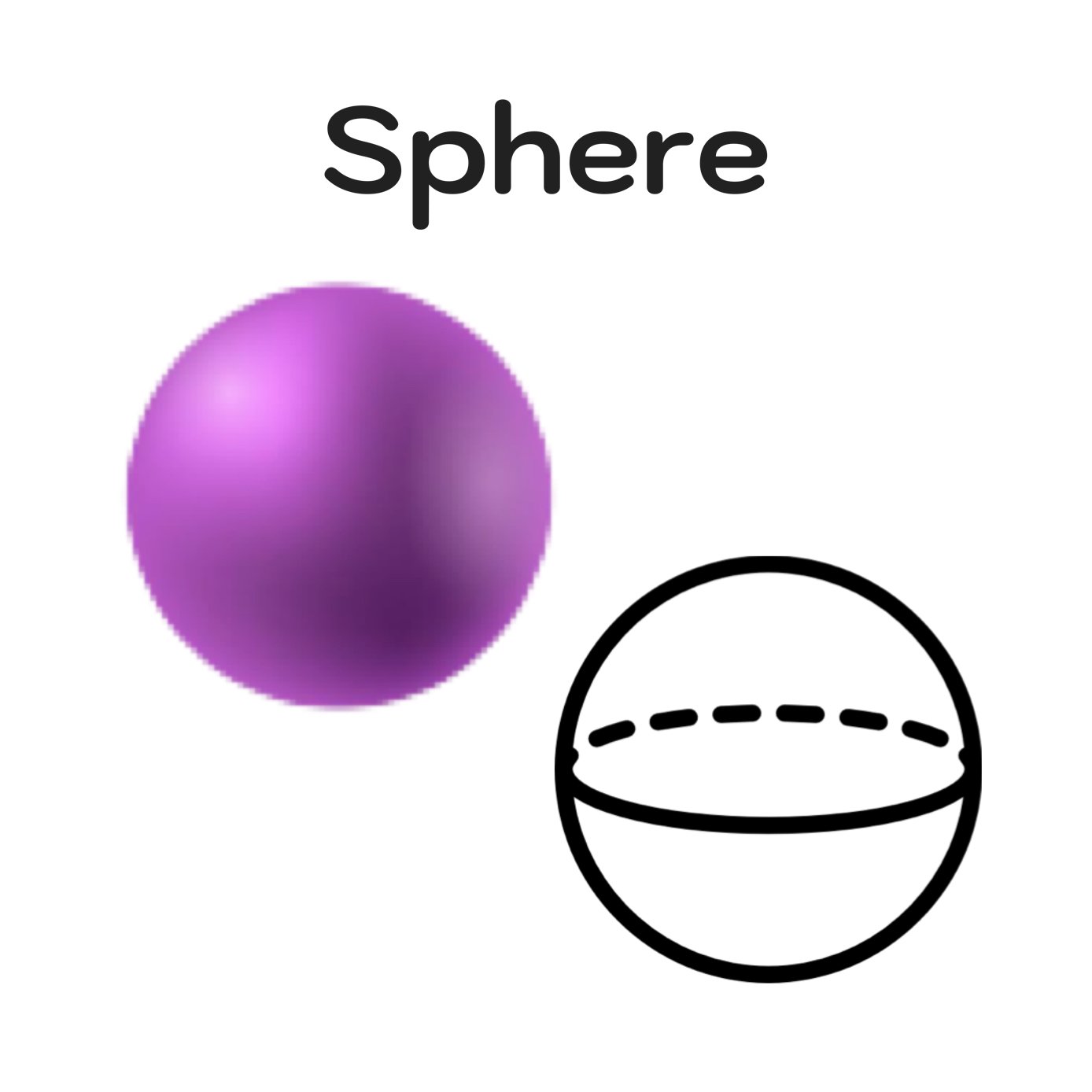
Pyramid
A pyramid is a 3D geometric shape with a polygonal base and triangular faces that slant up to a single point called an apex.

Platonic Solids and Other Shapes

In addition to the 3D-shapes previously shown, there are several extremely interesting three-dimension shapes such as the platonic solids and another extremely fascinating three-dimensional shape called a Buckyball—a spherical molecule composed of 60 carbon atoms arranged in a pattern resembling a soccer ball. It has unique physical and chemical properties that make it useful in a wide range of applications, including materials science, nanotechnology, and medicine.
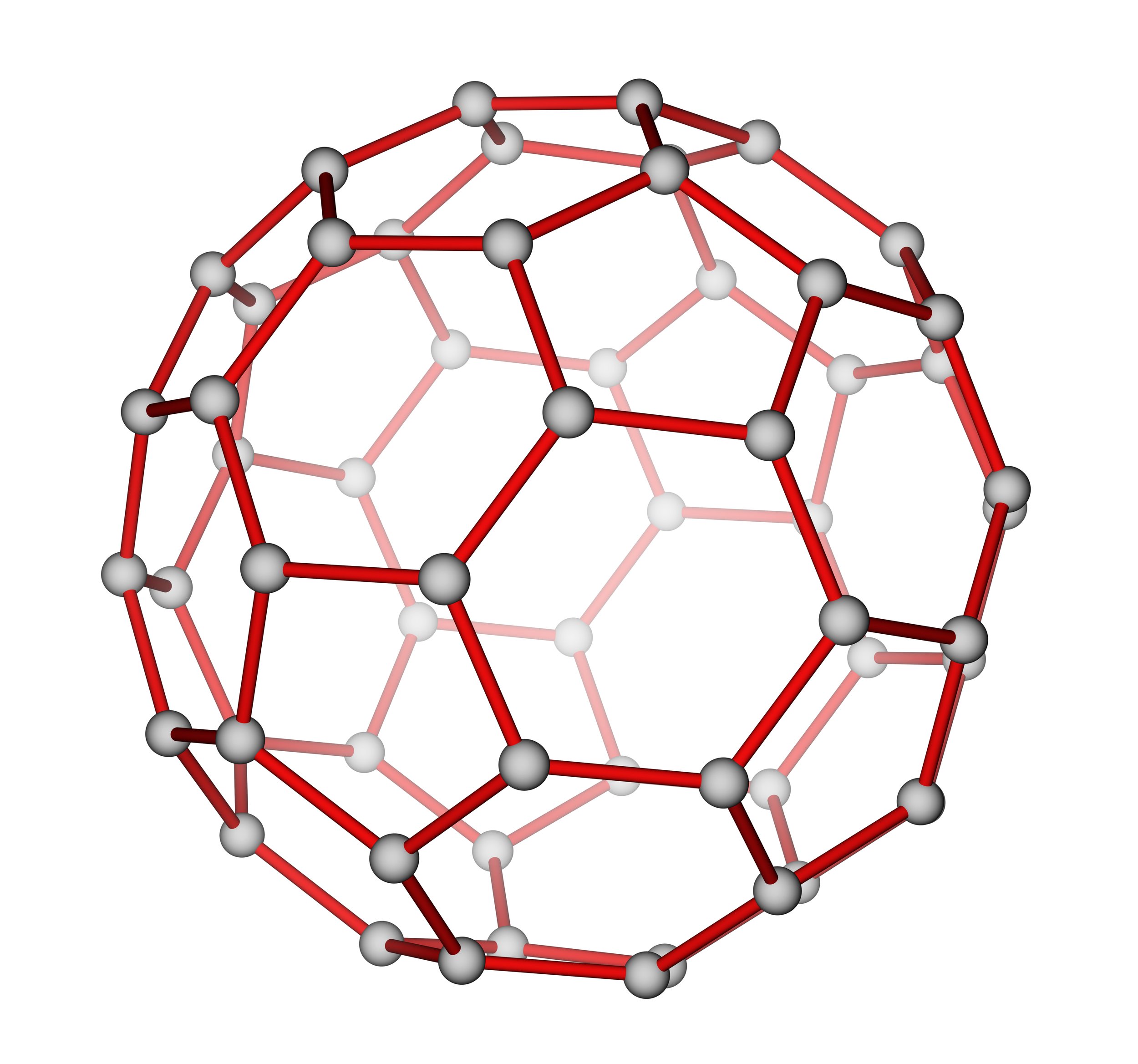
Buckyball
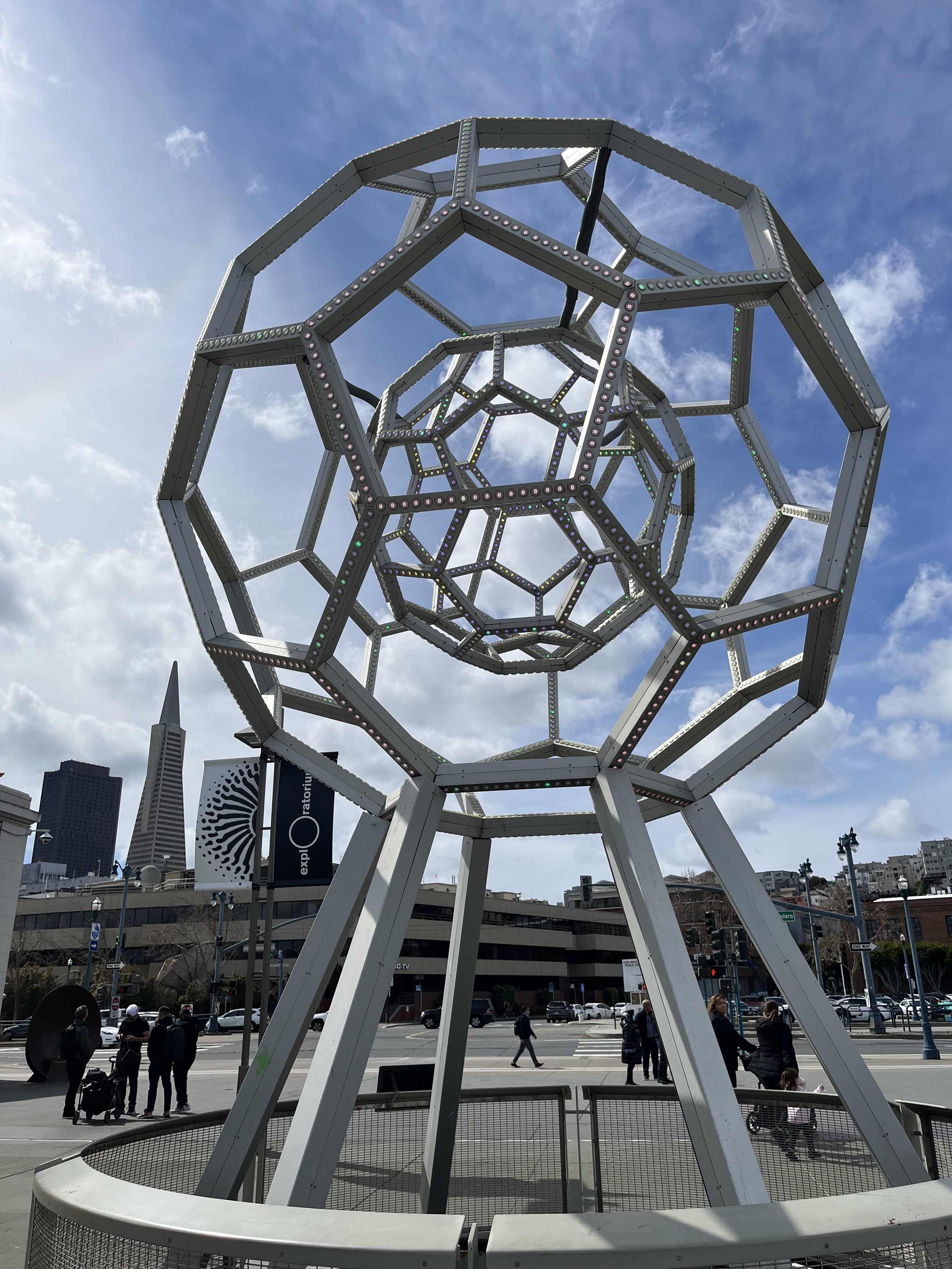
The famous 25-foot tall Buckyball sculpture located at the Pier 15 Exploratorium in San Francisco, California.
Tetrahedron: 4 faces, 4 points, 6 edges
Hexahedron: 6 faces, 8 points, 12 edges (like a cube)
Octahedron: 6 faces, 6 points, 12 edges
Icosahedron: 20 faces, 12 points, 30 edges
Dodecahedron: 12 faces, 20 points, 30 edges
What is the difference between 2D geometric shapes and 3D geometric shapes?
The key difference between 2D geometric shapes and 3D geometric shapes is the quantity of dimensions—namely that 2D geometric shapes have two dimensions (length and width) and 3D geometric shapes have three dimensions (length, width, and height).
By looking at each 2D geometric shape in the list above, you can see that each geometrical shape is flat. Such shapes can be drawn on flat surfaces including a sheet of paper or on a screen. Conversely, 3D geometric shapes have what is called depth. These kinds of shapes are referred to as solids and they are not flat. You can construct 3D geometrical shapes using physical materials such as cardboard, plastic, or clay.
As far as real world applications go, 2D geometric shapes are used for things like making blueprints or graphic designs, while 3D geometric shapes are used for things like building objects out of wood, designing video game levels, and construction.
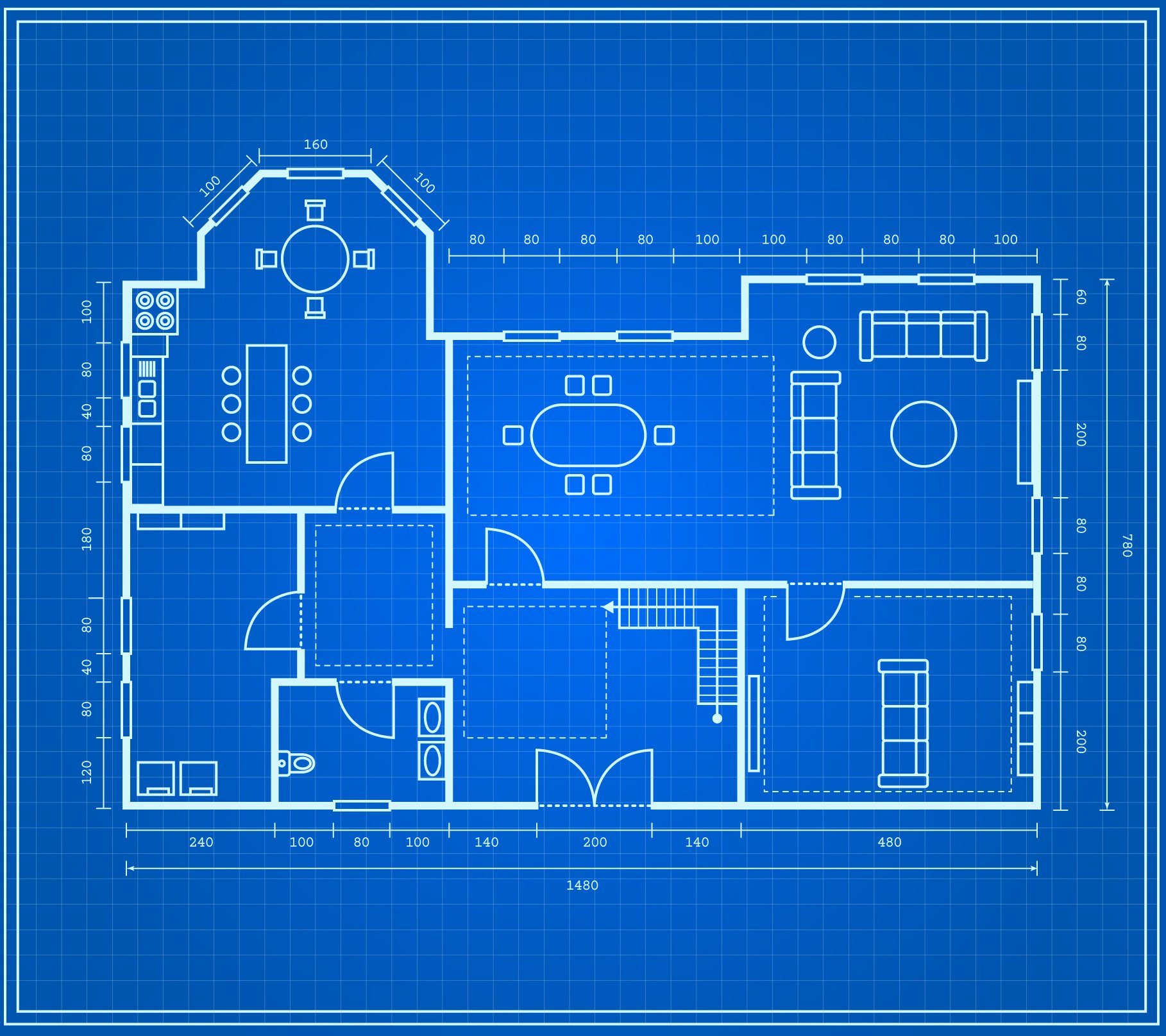
Notice that the blueprint design of a house is two-dimensional (flat) and is comprised of only 2D geometric shapes.

On the other hand, an actual house has depth and is made of 3D geometric shapes.
Geometric Shapes Art
What is geometric shapes art? The answer to this question is that almost all forms of art rely on 2D and 3D geometric shapes—including graphic design, painting, sculpting, tessellations, and even architecture. Without geometric shapes, artists would not be able to instill elements like patterns, balance, movement, harmony, or structure into a work.
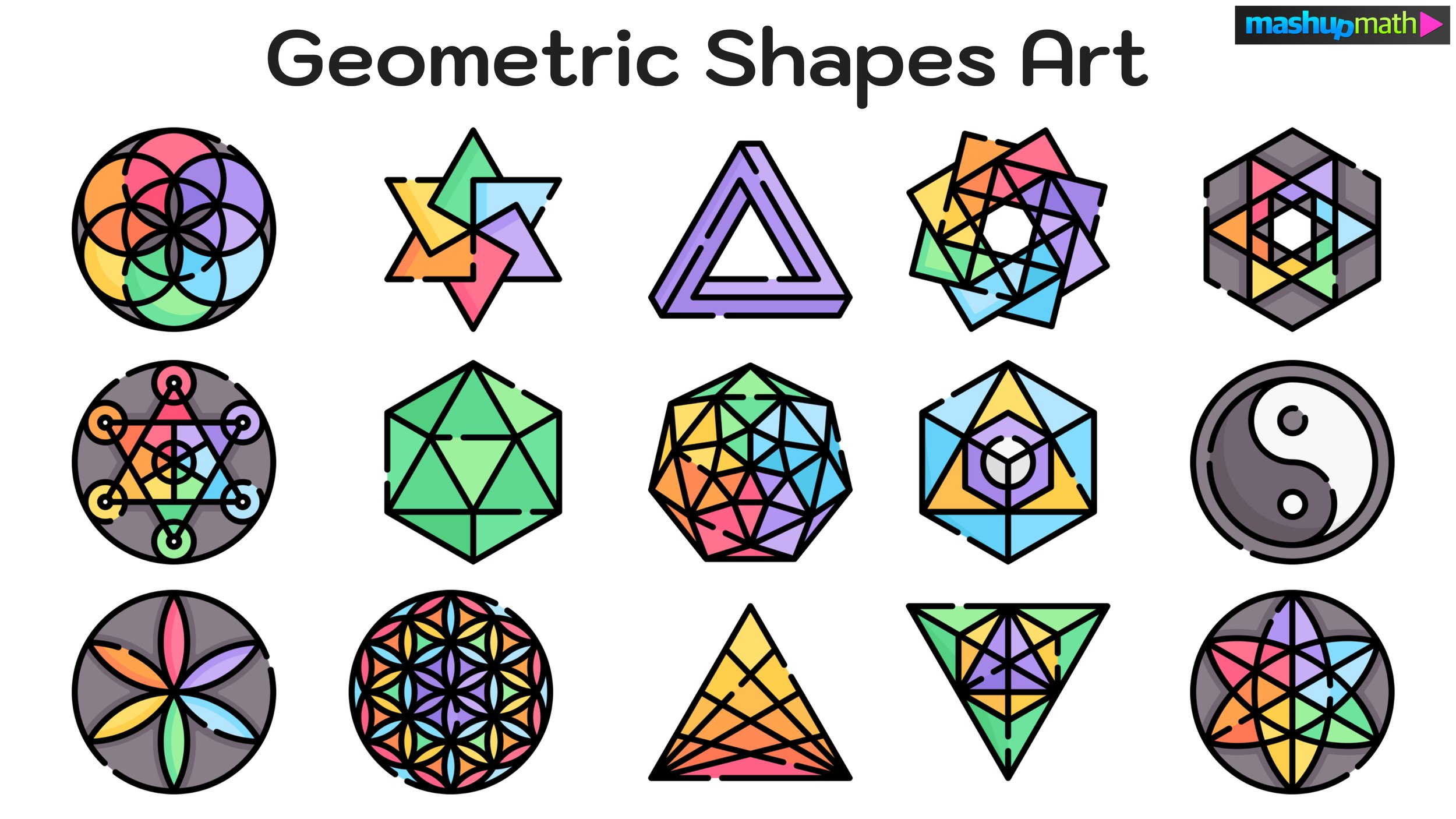
All of these geometric shapes art designs were created using the 2D and 3D geometric shapes from the lists above.
Many think of abstract paintings or even sacred geometry images when they think of geometric shapes art, but the concepts also extend to areas like sculpture (geometrical shapes are used to create depth and portray themes such as balance or movement.
Furthermore, geometrical shapes are often used in a range of graphic design projects including the creation of logos for companies, wallpaper designs, murals, and even 3D-printing!
Geometrical shapes are, in essence, the foundation of any aspect of art, since all designs, 2D or 3D, are comprised on geometrical shapes in some form.
Below are a few more examples of geometric shapes artworks:

Geometric Shapes Art: Wall Murals

Geometric Shapes Art: Sacred Geometry

Geometric Shapes Art: 3D-Printing
Free Printable Geometric Shape Chart
Now that you are familiar with all of the geometric shapes and geometric shapes names, you can begin to study them all and learn to memorize each geometric shape, what it looks like, and what its unique properties and characteristics are.
To help you study, you can use the link below to download a free printable Geometric Shapes Chart PDF file that you can use as a reference guide whenever you are dealing with geometrical shapes.
→Click here to download your free Geometric Shapes Chart PDF

